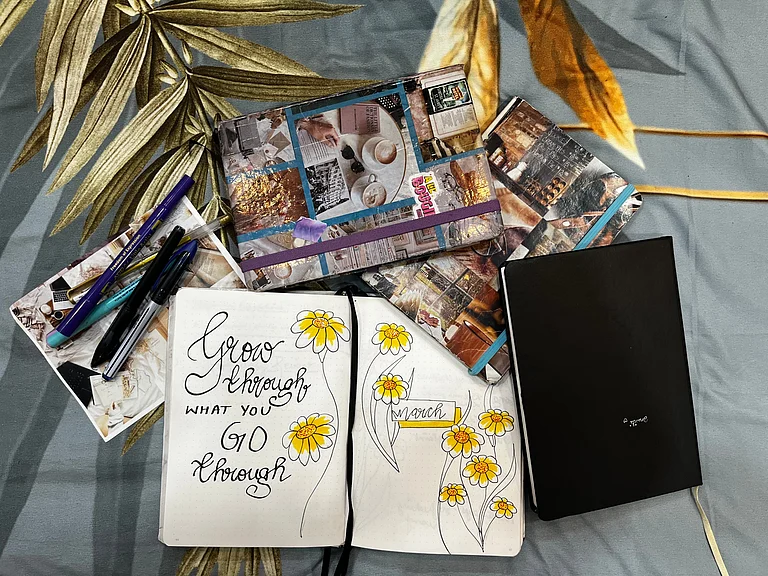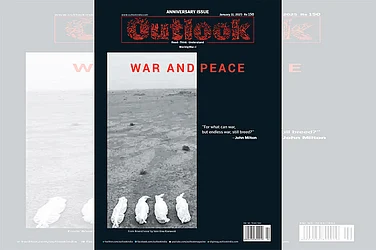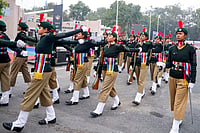- Of the estimated 75 million illegal small arms worldwide, India accounts for over half, ie, 40 million pieces. An equal number being manufactured in the illegal factories in Bihar and UP.
- Bulk of illegal arms not in conflict areas like J&K, the Northeast. The underworld in central India, Naxalites in the Red Corridor major end-users.
- The entry points of arms are land routes via Myanmar, and the sea route through Chittagong in Bangladesh. Also through Nepal, Punjab and J&K.
- Chinese small arms are now popular.
***

In fact, of the illegal arms in circulation worldwide—estimated at 75 million pieces—a shocking 40 million have found their way into India. An equal number, if not more, is being manufactured in illegal arms factories in UP and Bihar, available for as little as Rs 200. "Lethal arms is as easily available as a paan," says the report. And small arms, through their direct use or even threat of it, inflicted more deaths, injuries, rapes, kidnappings and torture than any other weapon.
Sometimes even legally produced or imported arms fall into illegal hands. A case in question: after the March 13 train hijack in Jharkhand, CRPF personnel in their raids seizedINSAS rifles. Now this is a weapon used only by the armed forces, which raises even more perplexing questions. And it’s not the first time it’s happening. "It’s a matter of grave concern...and the government needs to address it urgently. We need to exercise tighter controls," says Prof Anuradha Chenoy of Control Arms Foundation of India (CAFI), which closely assisted Oxfam. She says instances of Naxalites and Manipuri insurgents seizing government arms has been on the rise.
The study also reveals how illegal weapons are ingeniously made legit, and even licensed, mainly in central India (and in particular Uttar Pradesh). A UP police official explains the modus operandi. "There are many weapons here belonging to the small, erstwhile rulers. These are mostly legal and accounted for. Since many of them are too old and not usable, they are destroyed. However, their numbers are used in the illegal weapons." He went on to add that the revolvers and pistols being churned out illegally in some of the unauthorised factories were of such fine make that it was difficult to differentiate between them and, say, an original Smith & Wesson, Walther PPK or Beretta.
Chinese pistols have also become a hot favourite in the illegal small arms bazaar, mostly due to the easy availability and because they are relatively cheaper. The Naxalites are mostly the end users of these, having links with the Maoists in Nepal. It’s in turn become a major problem for the states in the red corridor covering Bihar, UP, Jharkhand, Chhattisgarh, Orissa, Maharashtra, West Bengal, Karnataka and Andhra Pradesh. Along with the central India mafia, the Naxalites have become primary purchasers of assault weapons like Kalashnikovs and M-16s. The Oxfam report says the porous Indo-Nepal border, nestling UP and Bihar, are easy entry points.
A sizeable amount of illegal arms also comes into the country through the Northeast and from the North West Frontier Province (NWFP) on Pakistan’s Afghan border. Binalakshmi Neparam of CAFI, who has done extensive research on the subject, says, "India is sandwiched between two major international weapons warehouses—the NWFP, a Cold War weapon debris ground, and the Southeast Asia arms bazaar comprising Thailand, Cambodia and Myanmar. There are as many 13 identified gun-running routes in and around the Northeastern border areas and the Chittagong hill tracts."
The fact that there is a free movement regime between India and Myanmar has made cross-border smuggling of small arms that much easier. The ministries of external affairs and home have taken up the issue several times with Myanmar and other neighbouring countries. In fact, the entry of illegal arms and Dhaka’s support to insurgents was on the agenda for talks during the recent India visit of Bangladesh prime minister Begum Khaleda Zia. Incidentally, many of the arms making their way into India are even now remnants of the 1971 Bangladesh war.

An IB official disclosed to Outlook that Ruili, a town on the Myanmar-China border in the Yunan province, was a nerve centre for illegal trade of small arms into India. The arms came into Mizoram, Manipur and Nagaland via the land route, and using the sea route via Chittagong. This became apparent following Bangladesh’s biggest ever arms haul, on a jetty in the Karnaphuli river, Chittagong, on April 2, 2004. The haul netted 1,790 rifles (including Uzi submachine guns and assault rifles of the AK series), 150 rocket launchers, 840 rockets, 2,700 grenades and more than a million rounds of ammunition. After being unloaded on the east bank of the Karnaphuli from two trawlers that originated in Malaysia, the weapons were being loaded on to 10 trucks. Investigators believe the arms were earmarked for the Maoist rebels in Nepal and the Naxalites in India.
The Oxfam report also indicates a strong drugs-arms link. "Armed groups are often intimately linked with drug trafficking. An estimated 95 per cent of the world’s opium comes from war-torn nations, drug money bankrolls armed groups in Afghanistan and Myanmar, to name just two countries. Arms and drugs often travel on the same routes in different directions, using the same operators, middlemen and carriers. Revenues from drugs finance the purchase of arms, ammunition, uniforms, military equipment and other items."
The report acknowledges that India has strong anti-drug and arms laws but they were proving to be ineffective, mainly because of uneasy relations between South Asian neighbours. "It’s the main hindrance in efforts to prevent small arms proliferation. A disinclination to address the problem has meant that South Asia lags far behind some other regions in its efforts to address small arms proliferation," says IANSA. The Indian government, on its part, has been trying to tackle the menace. The ministries of home and external affairs are even now jointly drafting a proposal to the United Nations, seeking a global ban on small-arms sales to non-state users.
The ban will seek to include both military-style small arms and light weapons as well as commercial firearms. A UN report says a ban on small arms would cover the following—revolvers, self-loading pistols, rifles and carbines, assault rifles, submachine guns and light machine guns. And light weapons including heavy machine guns, hand-held under-barrel and mounted grenade launchers and the like. Should the ban be implemented, the world would be a safer place. The big question is: will the countries who manufacture these arms and rake in the profits allow such a move to even take off?

























